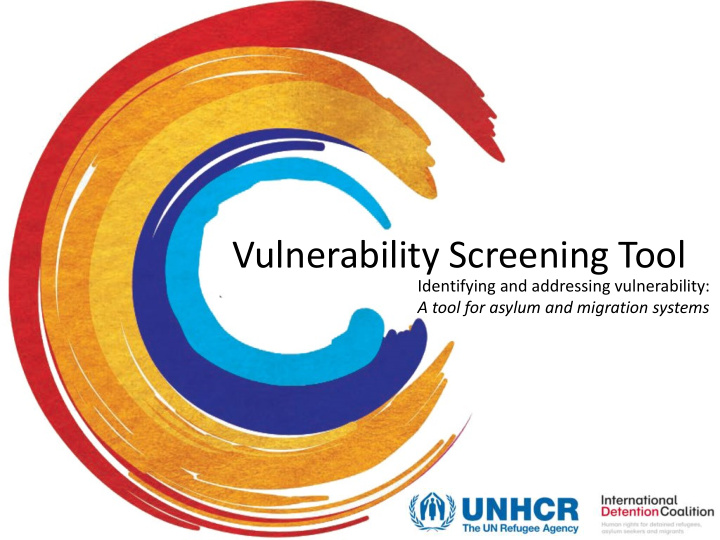



Vulnerability Screening Tool Identifying and addressing vulnerability: A tool for asylum and migration systems
Purpose Intended to guide & inform frontline workers & decision makers on the relevance of vulnerability factors to detention, community placement decisions, referrals & support
Structure Section A: Introduction Section B: Vulnerability Screening Tool Section C: Individual Case Factors & Referral to Placement and Support Options
Vulnerability & resilience Vulnerability • Exposure to risks of harm • Situational • Not fixed - dynamic • Human rights framework guide identification & response Resilience • Coping capacity • Resourcefulness • Cultural & social resources
Vulnerability Vulnerability is situational , we avoid the notion of ‘inherent vulnerability’ that is often covert, patronising and disempowering. The person is not the problem.
Screening & assessment Screening helps to determine whether a more comprehensive and professional assessment is called for.
Preliminary screening At point of first contact: • Explain purpose & process of interview Basic questions to identify: • who may have formal protection needs (asylum seekers) • who may require immediate assistance
Vulnerability domains
Implementing the VST 1. Consider prompts 2. Consider questions
Implementing the VST 3. Note existing service providers 4. Describe risk of harm 5. Summarise vulnerability
Implementing the VST 6. Rate intervention level
Implementing the VST 7. Consider placement options: • alternatives to detention • open reception • community based placement & support
Implementing the VST 8. Consider support options • Health • Case management • Basic needs • Legal advice • Others 9. Consider strengths & strategies for building resilience
Implementing the VST 10. Make and record referrals and decisions
Country examples Zambia • National Referral Mechanism • Screening & assessment to identify & protect vulnerable migrants • Developed from & promotes government & interagency collaboration United States of America • Risk Classification Assessment Tool • Guides detention, initial placement & support decisions • Automated
Benefits for Government With early and repeat screening and intervention: • Improved management of resources • Mitigate unnecessary costs • Prevent, reduce and better manage risks such as harm related to detention • Individuals better able to comply with asylum & migration system requirements • Prioritise & achieve faster case resolution: settlement & voluntary return
Core competencies Values & Attitudes Knowledge Skills
Standards and safeguards • Facilities • Interpreter • Gender-related considerations • Legal representation & support persons • Information provision • Core competencies for interviewers • Referral & reassessment • Identify resilience, strengths, family, community • Data protection
Thank you For more information: www.idcoalition.org www.unhcr.org/detention
Recommend
More recommend